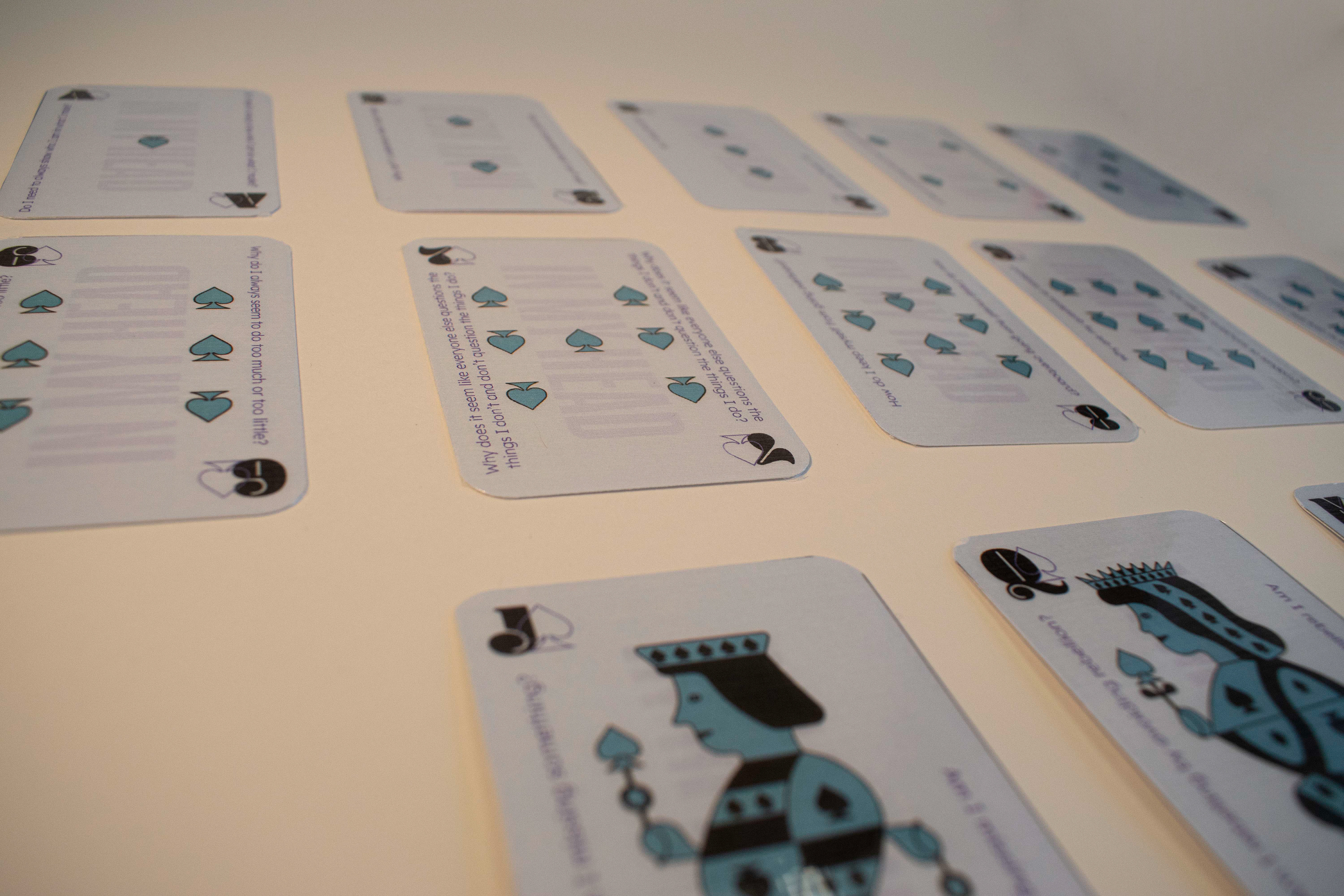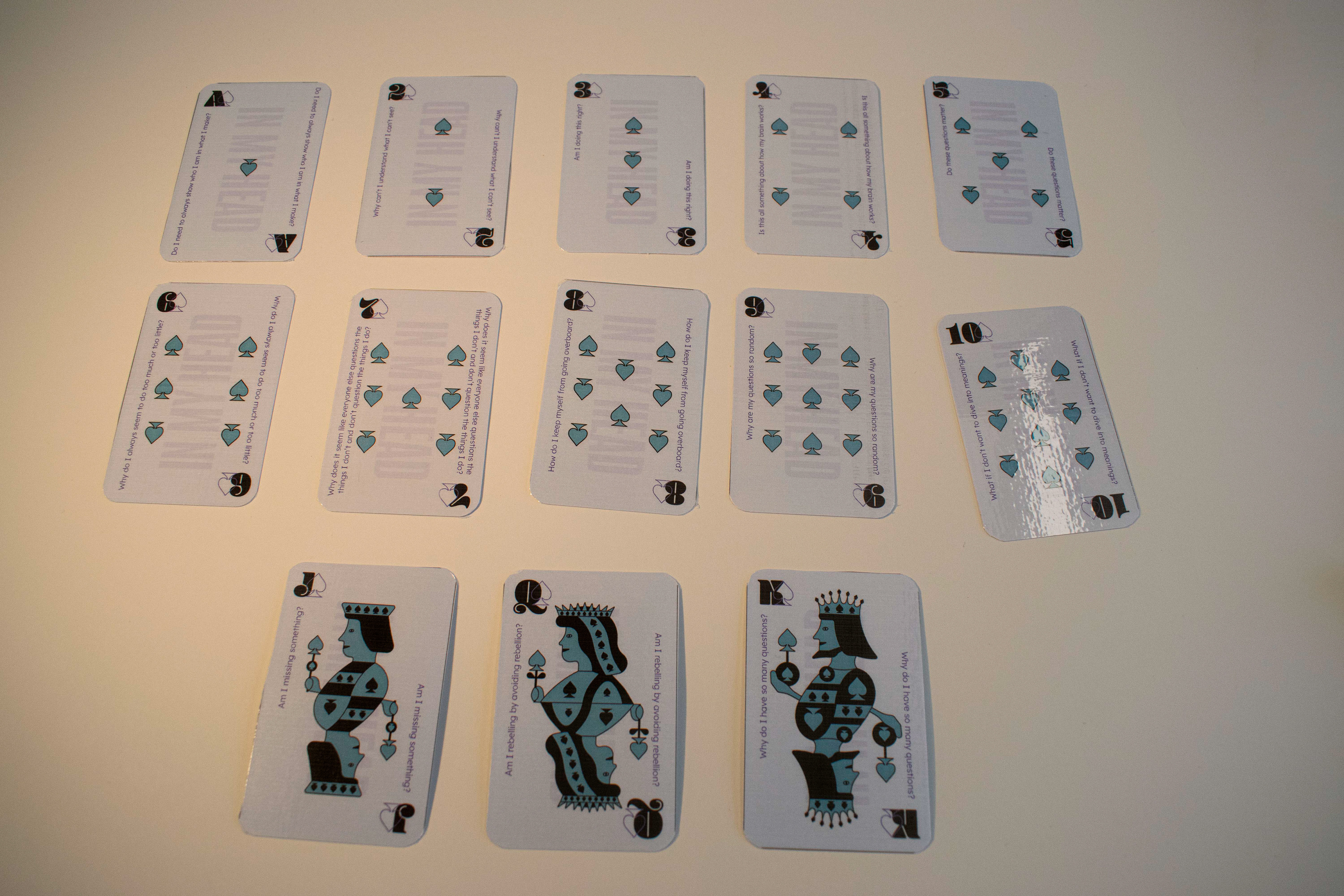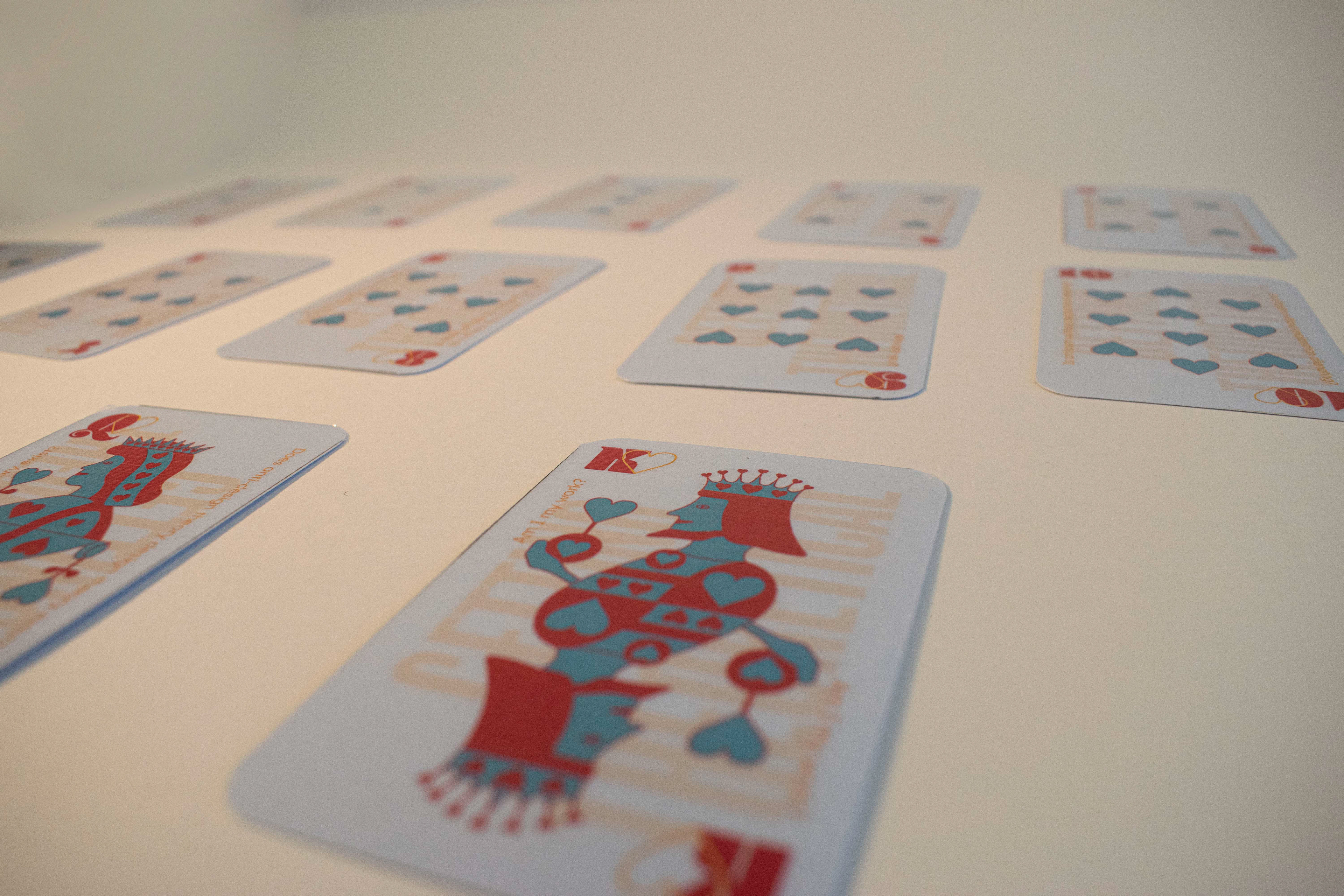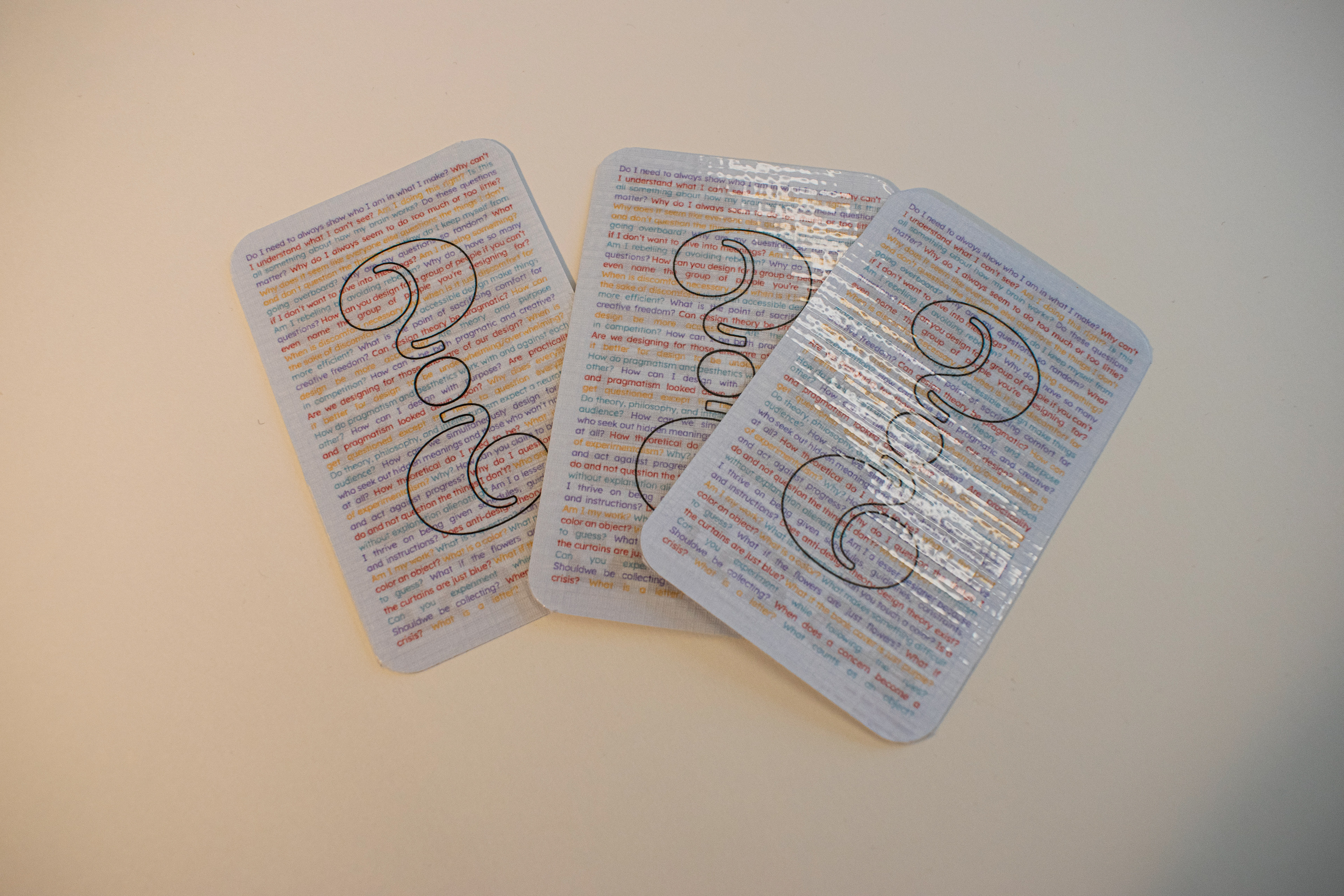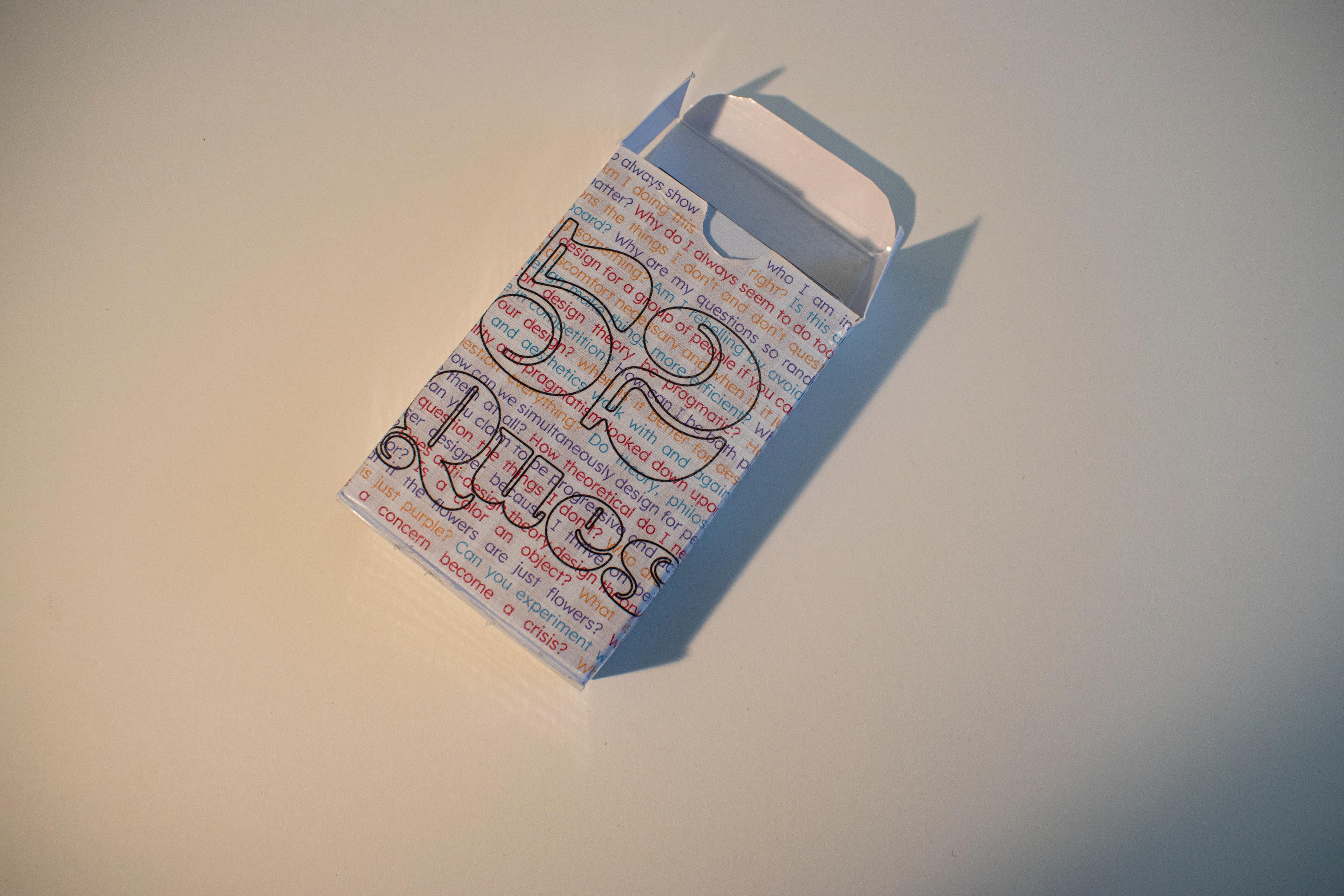The 50 Questions assignment was seemingly simple. We were prompted to ask at least 50 questions and then present them in some sort of designed object.
When working on a project like this, I often get hooked on an idea and don’t even consider anything else.
The idea for playing cards came simply from thinking of things that came in sets of about 50. It’s that simple.
The idea for playing cards came simply from thinking of things that came in sets of about 50. It’s that simple.
I sorted my questions into four categories using the suits of the playing cards and assigned one question
to each of the 52 cards.
to each of the 52 cards.
The categories I came up with to sort my questions were “In My Head,” “Pragmatism & Accessibility,” “Getting Theoretical,” and “Random Questions.”
“In My Head” became the spades and contained questions that dealt with how I perceive design and perceive
the world around me. “Pragmatism & Accessibility” became the clubs and dealt with questions about accessibility. “Getting Theoretical” became the hearts and was mostly just me asking questions that critiqued a theoretical perception of design. “Random Questions” became the diamonds and served as a landing place for the questions that did not fit into the other categories.
the world around me. “Pragmatism & Accessibility” became the clubs and dealt with questions about accessibility. “Getting Theoretical” became the hearts and was mostly just me asking questions that critiqued a theoretical perception of design. “Random Questions” became the diamonds and served as a landing place for the questions that did not fit into the other categories.
I tested out different types of paper by playing solitaire because if I was going to make playing cards, I wanted to actually be able to play card games with them. The cards are printed on my favorite paper (Southworth Linen for those who are interested) and then laminated to get the look, feel, and function of playing cards.
I really enjoyed the repetitive nature of working in the medium of playing cards. I love that every card is just
slightly different from all of the others. My classmates also found joy in this project. As I was presenting, they started building houses of cards and sorting the cards in numerical order. This became a truly interactive project.
slightly different from all of the others. My classmates also found joy in this project. As I was presenting, they started building houses of cards and sorting the cards in numerical order. This became a truly interactive project.
Details
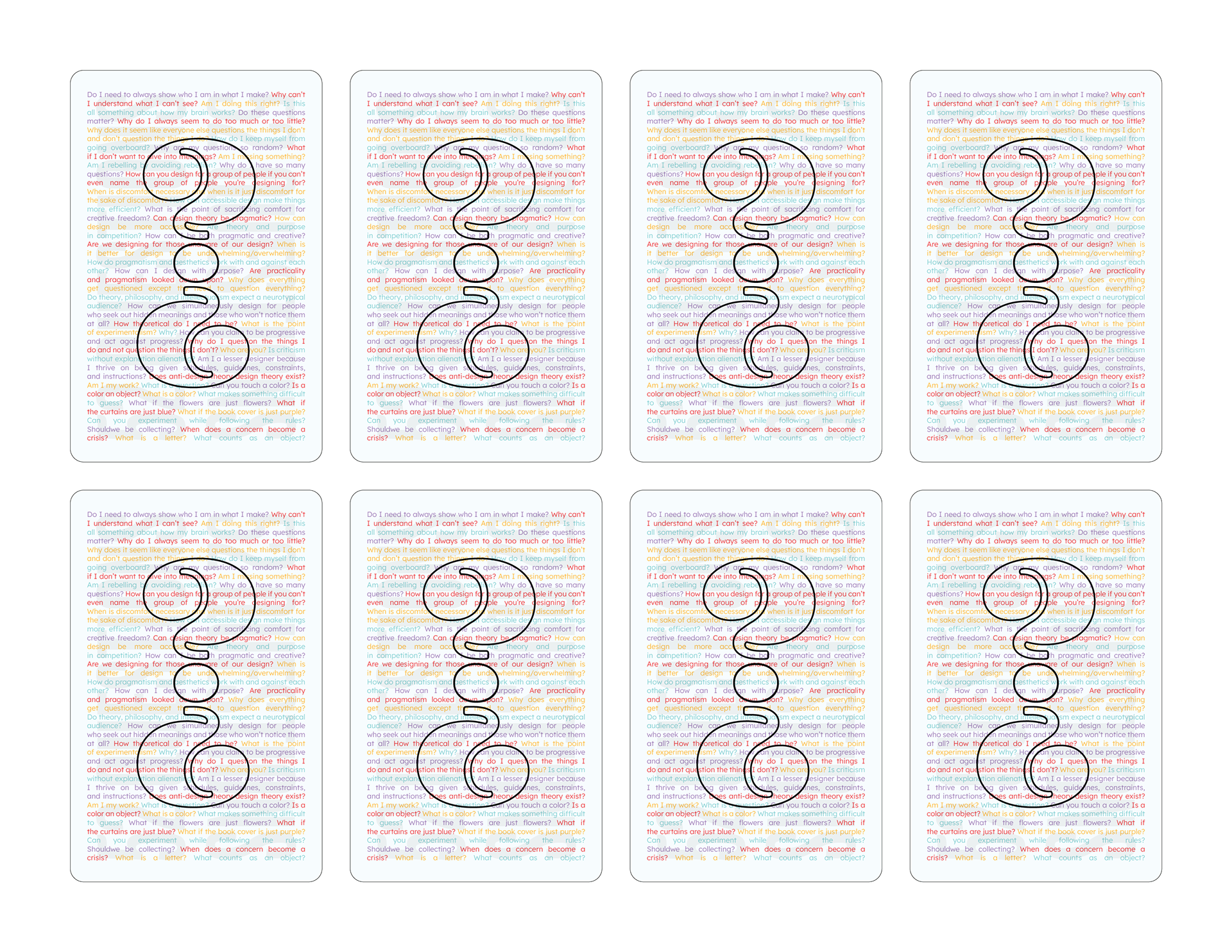
Backs of the cards.
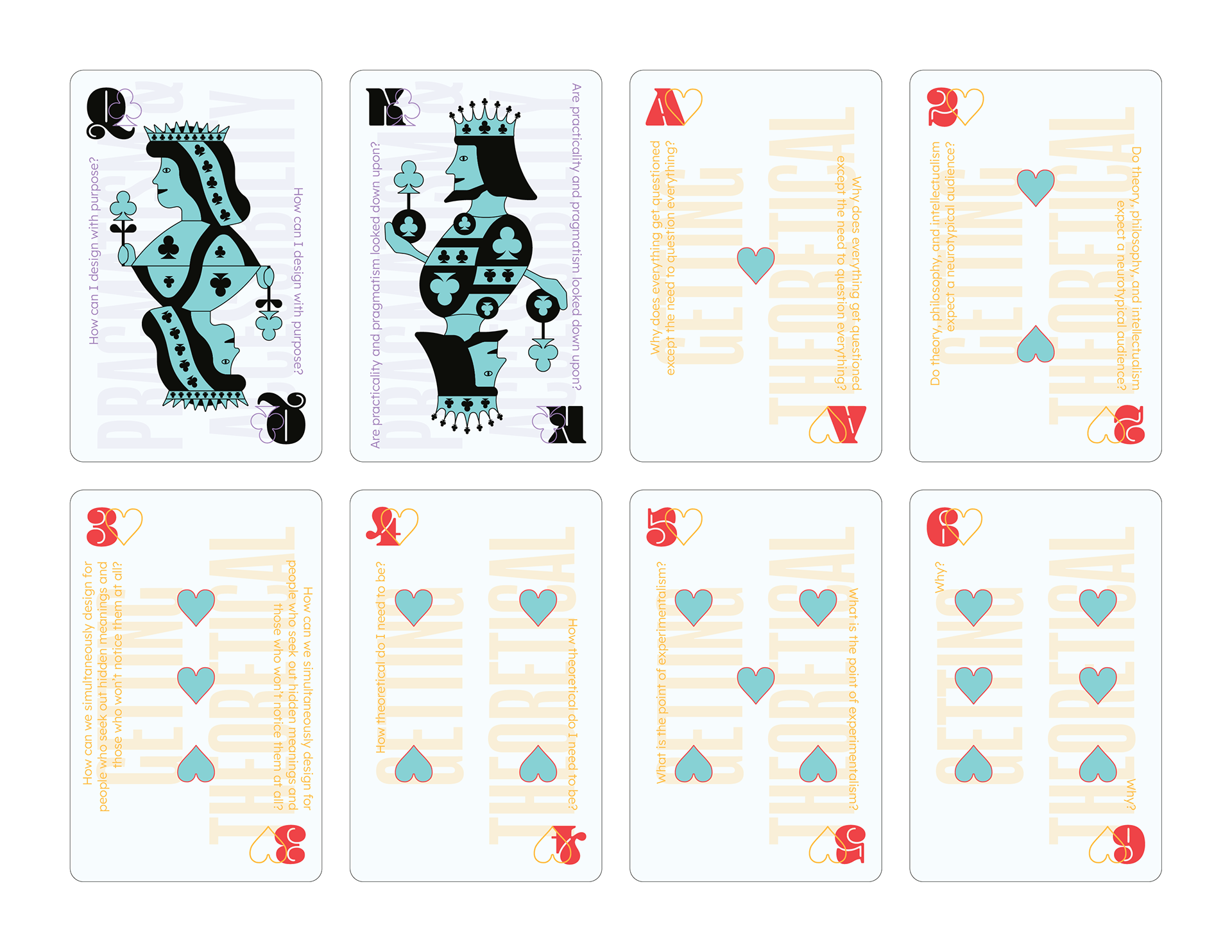
Fronts of the cards.

Close-up of the back of the cards.

Layout of the card box.
Final Cards

